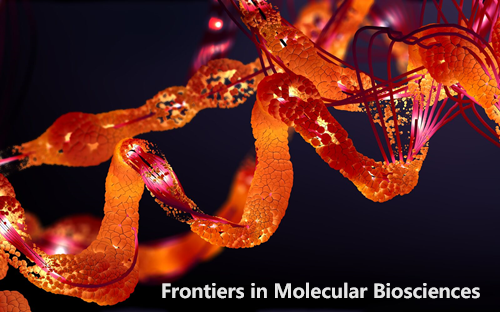通过虚拟筛选发现 8-氧鸟嘌呤调节剂 PCBP1 抑制剂及其与调节 ROS 的药物在胰腺癌中的协同作用
IF 3.9
3区 生物学
Q2 BIOCHEMISTRY & MOLECULAR BIOLOGY
引用次数: 0
摘要
简介针对活性氧(ROS)代谢的药物推动了胰腺癌的治疗,但由于癌细胞对高浓度ROS的适应性,这些药物的疗效仍然不佳。细胞通过识别 8-氧鸟嘌呤残基和处理严重氧化的 RNA 来应对 ROS,这使得通过靶向 8-氧鸟嘌呤调节剂来提高 ROS 调节药物在胰腺癌中的疗效成为可能:方法:通过癌症基因组图谱(The Cancer Genome Atlas,TCGA)项目和基因表达总库(Gene Expression Omnibus,GEO)数据集,发现聚(rC)结合蛋白1(Poly(rC)-binding protein 1,PCBP1)是胰腺癌的潜在致癌基因。利用高通量虚拟筛选技术筛选出了 PCBP1 的潜在抑制剂。计算分子动力学模拟用于验证两种化合物与 PCBP1 之间的稳定相互作用及其结构-活性关系。体外实验对 silychristin 进行了功能验证:结果:在这项研究中,我们发现 PCBP1 是胰腺癌的潜在致癌基因。通过应用高通量虚拟筛选,我们发现化合物 102 和化合物 934(silychristin)是潜在的 PCBP1 抑制剂。计算分子动力学模拟和虚拟丙氨酸诱变验证了 PCBP1 与这两种化合物之间的结构-活性相关性。这两种化合物干扰了 PCBP1-RNA 的相互作用,损害了 PCBP1 处理 RNA 的能力,导致细胞内 R 环积累。化合物 934 与 ROS 制剂过氧化氢协同作用,强烈改善了胰腺癌细胞的诱导性细胞死亡:我们的研究结果为开发以 PCBP1 为靶点的药物提供了有价值的见解,并为胰腺癌的 ROS 调节药物找到了有前景的协同制剂。本文章由计算机程序翻译,如有差异,请以英文原文为准。
Discovery of an 8-oxoguanine regulator PCBP1 inhibitor by virtual screening and its synergistic effects with ROS-modulating agents in pancreatic cancer
Introduction: Drugs that target reactive oxygen species (ROS) metabolism have progressed the treatment of pancreatic cancer treatment, yet their efficacy remains poor because of the adaptation of cancer cells to high concentration of ROS. Cells cope with ROS by recognizing 8-oxoguanine residues and processing severely oxidized RNA, which make it feasible to improve the efficacy of ROS-modulating drugs in pancreatic cancer by targeting 8-oxoguanine regulators.Methods: Poly(rC)-binding protein 1 (PCBP1) was identified as a potential oncogene in pancreatic cancer through datasets of The Cancer Genome Atlas (TCGA) project and Gene Expression Omnibus (GEO). High-throughput virtual screening was used to screen out potential inhibitors for PCBP1. Computational molecular dynamics simulations was used to verify the stable interaction between the two compounds and PCBP1 and their structure–activity relationships. In vitro experiments were performed for functional validation of silychristin.Results: In this study, we identified PCBP1 as a potential oncogene in pancreatic cancer. By applying high-throughput virtual screening, we identified Compound 102 and Compound 934 (silychristin) as potential PCBP1 inhibitors. Computational molecular dynamics simulations and virtual alanine mutagenesis verified the structure–activity correlation between PCBP1 and the two identified compounds. These two compounds interfere with the PCBP1–RNA interaction and impair the ability of PCBP1 to process RNA, leading to intracellular R loop accumulation. Compound 934 synergized with ROS agent hydrogen peroxide to strongly improve induced cell death in pancreatic cancer cells.Discussion: Our results provide valuable insights into the development of drugs that target PCBP1 and identified promising synergistic agents for ROS-modulating drugs in pancreatic cancer.
求助全文
通过发布文献求助,成功后即可免费获取论文全文。
去求助
来源期刊

Frontiers in Molecular Biosciences
Biochemistry, Genetics and Molecular Biology-Biochemistry
CiteScore
7.20
自引率
4.00%
发文量
1361
审稿时长
14 weeks
期刊介绍:
Much of contemporary investigation in the life sciences is devoted to the molecular-scale understanding of the relationships between genes and the environment — in particular, dynamic alterations in the levels, modifications, and interactions of cellular effectors, including proteins. Frontiers in Molecular Biosciences offers an international publication platform for basic as well as applied research; we encourage contributions spanning both established and emerging areas of biology. To this end, the journal draws from empirical disciplines such as structural biology, enzymology, biochemistry, and biophysics, capitalizing as well on the technological advancements that have enabled metabolomics and proteomics measurements in massively parallel throughput, and the development of robust and innovative computational biology strategies. We also recognize influences from medicine and technology, welcoming studies in molecular genetics, molecular diagnostics and therapeutics, and nanotechnology.
Our ultimate objective is the comprehensive illustration of the molecular mechanisms regulating proteins, nucleic acids, carbohydrates, lipids, and small metabolites in organisms across all branches of life.
In addition to interesting new findings, techniques, and applications, Frontiers in Molecular Biosciences will consider new testable hypotheses to inspire different perspectives and stimulate scientific dialogue. The integration of in silico, in vitro, and in vivo approaches will benefit endeavors across all domains of the life sciences.
 求助内容:
求助内容: 应助结果提醒方式:
应助结果提醒方式:


